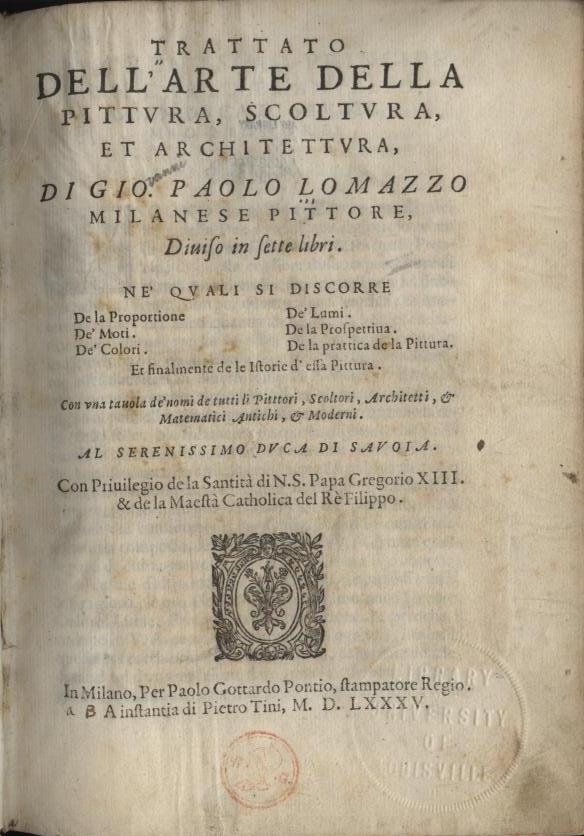The oldest books in the Art Library – Part II
Posted: October 17, 2011 Filed under: Art Library, Books | Tags: rare books Leave a commentThis post continues the series on some of the earliest books in the Art Library’s collection, all of which are housed in the Art Library’s rare book room. If you want to see any of them, just ask at the desk.
Here’s our next book, one with an exceedingly long title, by Giovanni Paolo Lomazzo: Trattato Dell’arte Della Pittura, Scoltura, et Architettura / Di Gio. Paolo Lomazzo … : Diuiso in Sette Libri : Ne’ Quali Si Discorre de la Proportione, de’ Moti, de’ Colori, de’ Lumi, de La Prospettiua, de La Prattica de La Pittura, et Finalmente de le Istorie d’Essa Pittura ; con Vna Tauola de’ Nomi de Tutti li Pitttori [Sic], Scoltori, Architetti, & Matematici Antichi, & Moderni.
It was published in 1585 in Milan by Paolo Gottardo Pontio, Stampatore Regio, a Instantia di Pietro Tini.
Giovanni Lomazzo’s book roughly translates as “A Treatise on the art of painting, sculpture and architecture… in seven books: motion, proportion, color, perspective, light, the practice of painting and the history of painting, including a table of name of all the painters, sculptors, architects and mathematicians, ancient and modern.” Whew!
Lomazzo was a northern Italian painter, poet and art theorist, and notable in intellectual circles in the late 16th century. When, at 33, blindness forced him to stop painting, he switched to writing about art. His works are some of the most important of the Mannerist period and remain a major source on Milanese artistic life.
The Trattato is one of his most ambitious and scholarly works. In addition to biographies of contemporary artists, he gave practical instruction for creating art. The treatise is also notable for the emphasis it places on light and psychological expression in art.
Here’s the title page:
and one of the pages:
Why does the Art Library have these books? Because they are primary source materials for art history, offering a first-hand account of an artist’s life, the first critical response to a building or painting, or a new theory of art or architecture. As the building blocks of art history, they remain relevant sources for researchers.

